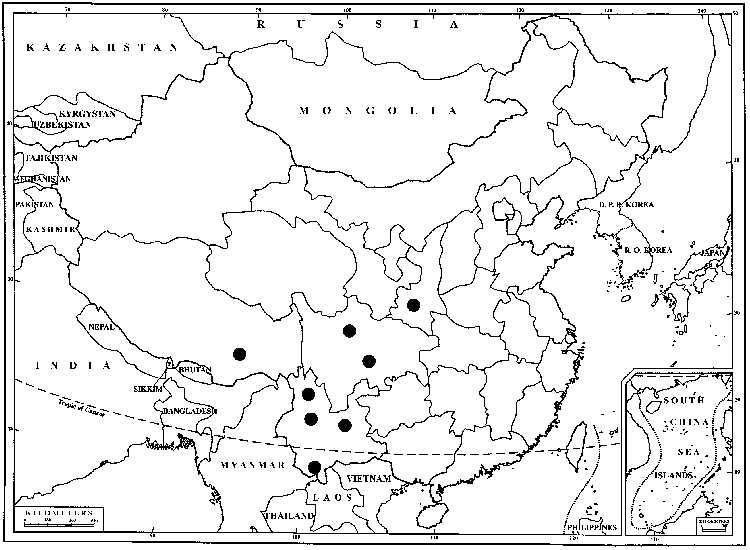Difference between revisions of "Fissidens curvatus"
Linnaea 15: 148. 1841,.
FNA>Volume Importer |
imported>Volume Importer |
||
| (6 intermediate revisions by 2 users not shown) | |||
| Line 10: | Line 10: | ||
|name=Fissidens milobakeri | |name=Fissidens milobakeri | ||
|authority=L. F. Koch | |authority=L. F. Koch | ||
| + | |rank=species | ||
}} | }} | ||
|hierarchy=Fissidentaceae;Fissidens;Fissidens curvatus | |hierarchy=Fissidentaceae;Fissidens;Fissidens curvatus | ||
| Line 23: | Line 24: | ||
|habitat=Bare, shaded soil, often among grasses in open Quercus forests and around bases of coastal shrubs | |habitat=Bare, shaded soil, often among grasses in open Quercus forests and around bases of coastal shrubs | ||
|distribution=Calif.;Mexico;West Indies;South America;Europe;Asia;Africa;Pacific Islands (New Caledonia;New Zealand);Australia. | |distribution=Calif.;Mexico;West Indies;South America;Europe;Asia;Africa;Pacific Islands (New Caledonia;New Zealand);Australia. | ||
| − | |discussion=<p>Fissidens curvatus is distinguished by its delicate dimorphic stems, usually long excurrent costa, limbidium confluent at leaf apex, and slightly elongate laminal cells. The theca is usually arcuate but can also be erect.</p> | + | |discussion=<p><i>Fissidens curvatus</i> is distinguished by its delicate dimorphic stems, usually long excurrent costa, limbidium confluent at leaf apex, and slightly elongate laminal cells. The theca is usually arcuate but can also be erect.</p> |
|tables= | |tables= | ||
|references= | |references= | ||
| Line 32: | Line 33: | ||
-->{{#Taxon: | -->{{#Taxon: | ||
name=Fissidens curvatus | name=Fissidens curvatus | ||
| − | |||
|authority=Hornschuch | |authority=Hornschuch | ||
|rank=species | |rank=species | ||
| Line 45: | Line 45: | ||
|publication year= | |publication year= | ||
|special status= | |special status= | ||
| − | |source xml=https:// | + | |source xml=https://bitbucket.org/aafc-mbb/fna-data-curation/src/2e0870ddd59836b60bcf96646a41e87ea5a5943a/coarse_grained_fna_xml/V27/V27_479.xml |
|genus=Fissidens | |genus=Fissidens | ||
|species=Fissidens curvatus | |species=Fissidens curvatus | ||
Latest revision as of 22:26, 5 November 2020
Plants 1.2–10 × 1–2.5 mm. Stem unbranched and branched; axillary hyaline nodules present; central strand weak or absent. Leaves as many as 25 pairs, narrowly lanceolate to ovate–lanceolate, acute to sharply acute to short acuminate, to 1.9 × 0.3; dorsal lamina narrowed proximally, ending before or at insertion, infrequently ± decurrent; vaginant laminae 1/2–4/5 leaf length, ± equal, minor lamina ending on or near margin; margin entire, limbate on all laminae, limbidium confluent at apex or ending shortly before apex, extending to base of dorsal lamina, limbidial cells 2–3-stratose; costa percurrent to excurrent, bryoides-type; laminal cells 1-stratose, distinct, smooth, ± bulging, firm-walled, elongate, 7–22 × 4–13 µm, increasing in size toward proximal part of leaf. Sexual condition rhizoautoicous; perigonia gemmiform, proximal to infertile and fertile stems. Sporophytes 1 per perichaetium. Seta to 12 mm. Capsule theca exserted, ± erect, radially symmetric to inclined, arcuate, bilaterally symmetic, 0.35–1.25 mm; peristome bryoides-type; operculum 0.25–0.3 µm. Calyptra cucullate, smooth, 0.5 mm. Spores 11–18 µm.
Habitat: Bare, shaded soil, often among grasses in open Quercus forests and around bases of coastal shrubs
Distribution

Calif., Mexico, West Indies, South America, Europe, Asia, Africa, Pacific Islands (New Caledonia, New Zealand), Australia.
Discussion
Fissidens curvatus is distinguished by its delicate dimorphic stems, usually long excurrent costa, limbidium confluent at leaf apex, and slightly elongate laminal cells. The theca is usually arcuate but can also be erect.
Selected References
None.